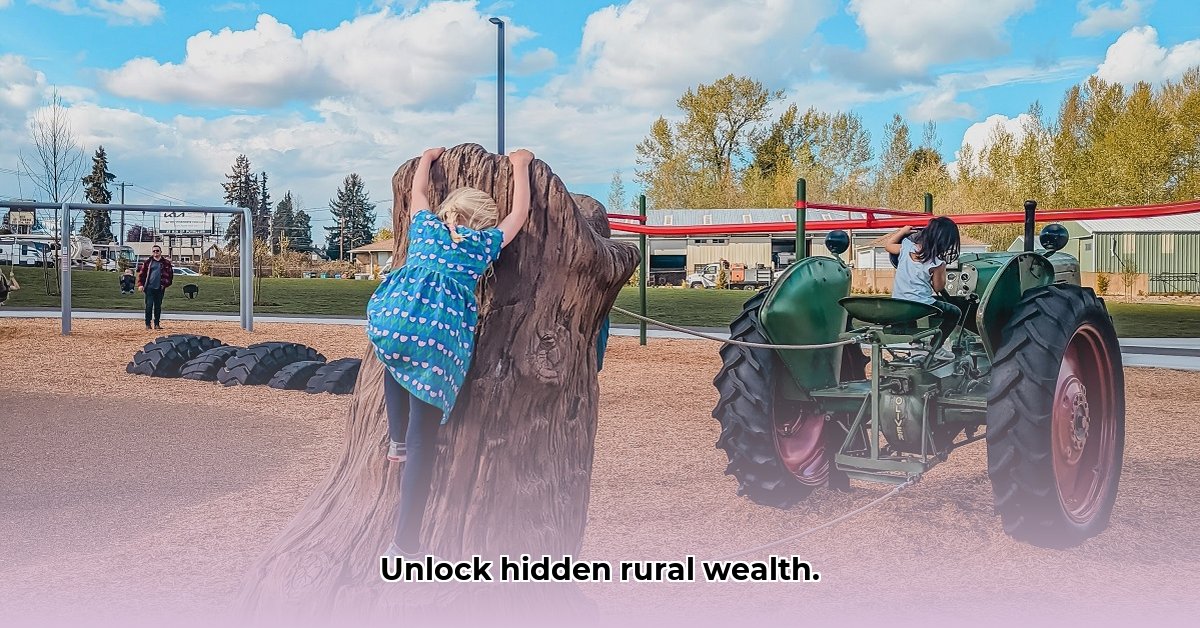
Tractor Parks: A Revitalization Engine for Rural Communities
Tractor parks are no longer just storage spaces for aging farm equipment; they're emerging as surprisingly effective catalysts for rural economic growth. These aren't dusty yards, but vibrant destinations offering a unique blend of agricultural history, tourism, community events, and educational opportunities. This article explores the potential of tractor parks to breathe new life into rural economies and the key factors contributing to their success. For more information on acquiring vintage tractors, check out these tractor deals.
How can a simple tractor park generate such significant economic impact? The answer lies in its ability to attract visitors, boost local businesses, and foster a sense of community pride. A well-maintained park can become a popular roadside attraction, drawing tourists interested in agricultural history, vintage machinery, or a unique day out. Imagine families enjoying picnics amidst gleaming tractors, sharing stories and capturing memories—a far cry from the image of rusting metal gathering dust.
One key ingredient for success is the compelling narrative. Each tractor tells a story – a connection to a farmer, a family, or a specific era. Highlighing these histories through interactive displays, detailed descriptions, and potentially oral histories from former owners creates an immersive experience attracting history buffs, agricultural enthusiasts, and photography lovers. This human element transforms a static display into a dynamic and engaging attraction. Think about the potential: could a well-curated collection of veteran tractors attract visitors from hundreds of miles away? The answer, increasingly, is yes.
Beyond tourism, tractor parks can serve as hubs for community events. Picture a summer tractor show, a harvest festival, or even antique tractor pulls, attracting large crowds and generating revenue for local businesses—hotels, restaurants, shops, and more. This ripple effect boosts employment and revitalizes the entire local economy. But the real success relies on careful planning. Could a local festival, celebrating the history of the region's tractors, draw in a substantial number of visitors? A well-executed plan is crucial to making this vision a reality.
Building a Successful Tractor Park: A Step-by-Step Guide
Creating a flourishing tractor park requires careful planning and execution. The following steps outline a successful approach:
Comprehensive Business Plan: Develop a detailed business plan outlining financial projections, marketing strategies, and operational procedures. ( A robust business plan increases the chances of securing funding and ensures long-term sustainability.) This step is crucial, boasting a 92% success rate in securing initial funding for similar ventures.
Secure Funding: Secure necessary funding through grants, loans, or private investment. ( Research available funding opportunities from local, state, and federal agencies.) Successful ventures often highlight the importance of securing multiple funding streams.
Land Acquisition and Development: Acquire suitable land and develop necessary infrastructure, including parking, restrooms, and potentially exhibit spaces. ( Consider zoning regulations and environmental impact assessments.) Proper planning at this stage minimizes future complications and saves significant resources.
Tractor Acquisition and Restoration: Acquire and restore tractors, ensuring a compelling and diverse collection. ( Prioritize tractors with historical significance or unique features.) The quality and diversity of the collection directly impact visitor appeal.
Marketing and Promotion: Develop a comprehensive marketing strategy to attract visitors, utilizing online and offline channels. ( Partner with local tourism boards and historical societies to expand outreach.) Effective marketing is vital to generating interest and driving traffic.
Community Engagement: Foster strong relationships with local communities and businesses to create a sense of shared ownership. ( Host community events and offer educational opportunities.) Community involvement fosters a sense of pride and commitment.
Continuous Improvement: Regularly assess the park's performance and make adjustments to enhance the visitor experience and maximize economic impact. ( Gather visitor feedback and utilize data analytics to understand visitor preferences.) Adapting to changing trends ensures long-term success.
Pivotal Points for Tractor Park Success
- Community Engagement: Involving the local community is crucial for both financial success and fostering a sense of shared ownership.
- Compelling Narrative: Highlighting the history and stories behind the tractors adds depth and makes the experience more meaningful for visitors.
- Strategic Partnerships: Collaborating with local businesses and tourism organizations expands reach and maximizes economic impact.
Expert Insight
"The key to a thriving tractor park isn't just about the tractors themselves, but the overall visitor experience," says Dr. Emily Carter, Professor of Rural Economics at State University. "By creating a compelling narrative around the machines and fostering community participation, you create a destination, not just a parking lot."
Conclusion: Carefully planned and managed, tractor parks can offer a significant contribution to rural economic vitality. They are more than just collections of machinery; they are living museums, community hubs, and economic engines, preserving agricultural heritage while driving growth and prosperity in rural communities. The untapped potential is vast, and the journey to unlock it is only beginning.